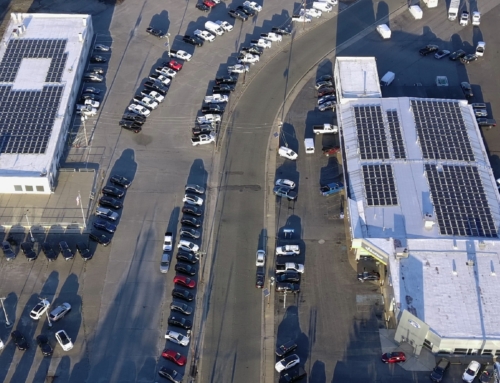
The late Justice Ginsburg was a Law Professor at Rutgers University in 1970 when the Environmental Protection Agency (EPA) was founded to oversee the landmark Clean Air Act (CAA). The CAA was passed to fight growing air pollution, protect the ozone layer, and safeguard public health.
Thirty seven years later, Ginsburg would be a part of a 5 justice majority ruling against the EPA in the High Court’s first ruling on a case that centered around Climate Change – Massachusetts, et al vs. the EPA.
The 2007 case centered around states (including New Jersey) and cities calling out the EPA for not regulating CO2 emissions which was designated to be part of the EPA’s function under the Clean Air Act. The EPA argued that the definition of potential air pollutants was too “ambiguous” for them to regulate and contended that they were not required to mandate greenhouse gasses.
In their ruling, The Supreme Court stated: “Greenhouse gases fit well within the Clean Air Act’s capacious definition of ‘air pollutant.” as well as reiterating that the Clean Air Act demanded that the EPA both regulate greenhouse gasses and enforce emission standards which protect the American public.
As a result of this important ruling, the EPA was charged with coming up with standards and protocols to manage emissions of not only carbon dioxide, but five other greenhouse gases.
In 2011, the EPA expanded their protections even further by placing restrictions on greenhouse gas emissions from power plants, refineries, and other large air polluters.
2011 was also the year Justice Ginsburg ruled in favor of the EPA in American Electric Power Co. Inc. vs. Connecticut. In this case, 8 states alleged that four utility companies were producing unreasonably high levels of carbon dioxide and contributing to climate change in their states. These states sought the right to set their own standards and consequences of CO2 output. The power companies contended the EPA should remain in charge of setting emissions standards via The Clean Air Act. However, Climate Change was held to be a federal issue.

Fred Krupp, the current president of the Environmental Defense Fund stated in response to the ruling: “The Supreme Court strongly underscored EPA’s responsibility under the law to address climate pollution that threatens the health and well-being of our nation.”
In 2014, in a 6-2 ruling, the high court revived the EPA’s Cross-State Air Pollution Rule, a 2011 EPA directive which requires 28 states to reduce emissions that hurt air quality in states located downwind. Over the years, the EPA had been confronted with many court hurdles while trying to enforce this particular measure.
It was Justice Ginsburg who wrote the majority opinion in a case that gave the EPA authority to regulate pollution from coal-fired power plants that blew over state lines.
The decision, written by Justice Ruth Bader Ginsburg, stated: “EPA’s cost-effective allocation of emission reductions among upwind States, we hold, is a permissible, workable, and equitable interpretation of the Good Neighbor Provision” [of the Clean Air Act].
This ruling provided President Obama the opportunity to introduce The Clean Power Plan in 2015. In this act, each state had to submit an individual goal to reduce CO2 emissions from power plants and a roadmap detailing how they were going to do it. It could be done by any combination of renewable energy sources. This plan would have led to a reduction of the US’s Carbon emissions by 32% and put the country back to 2005 emission levels.
Less than ten days afterwards twenty-seven states petitioned the courts for an emergency stay, arguing that Obama’s plan had overstepped its legal authority. On February 9th, 2016, The US Supreme Court ordered a halt to enforce Obama’s signature climate change plan. The decision passed 5-4 with Ruth Bader Ginsburg opposing the halt of The Clean Power Plan.
In June of 2019, the EPA, in conjunction with The Department of Transportation unveiled the Affordable Clean Energy as a replacement plan. Among the other watered down standards are fuel economy and emission standards increasing by 1.5% annually versus the initially proposed increase of roughly 5%.

Lawsuits have already been filed against implementing ACE and these legal battles could potentially make it up to The Supreme Court. However, in addition to passing down formal rulings, The Supreme Court decides which cases it will take time to hear. Unfortunately, with Justice Ginsburg’s seat open, it is possible that the myriad of opponents to the Trump administration’s Affordable Clean Energy Rule will never be heard.
Justice Ginsburg left behind a strong legacy of empowering the federal government via the EPA to protect both our health and the quality of our oxygen. With her passing, our planet has lost a champion.







